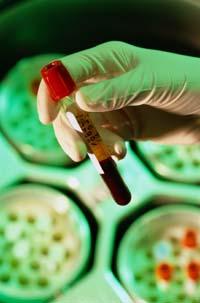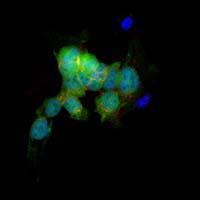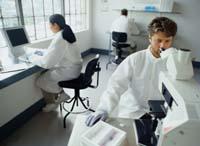Pathways in stem cell research

Embryos are the starting point for obtaining stem cells, which become totipotent cells of any type. These embryos are in an initial phase, in which the cells have still begun to divide and develop, hence these cells are so powerful. Scientists have shown that they can be useful in curing many diseases and have placed great hopes on them.
Research possibilities are scarce. Many people cannot accept the use of cells of an embryo, since the embryo itself is lost during the extraction of cells, without possibility of developing and becoming a child. Therefore, the National Institute of Health (NIH) has put strict limits on researchers working with embryonic stem cells, as well as those working in other countries. However, scientists have not been hooked and, as they are forced to invent journeys to obtain stem cells, they have developed other techniques.
Research without eggs
They usually start from an egg and an adult's cell. The egg is extracted from the nucleus and introduced into the adult cell, known as nuclear transfer. Subsequently, they stimulate the oculum to start fragmenting and then extract the totipotent stem cells.

A cutaneous cell of an adult and an embryonic stem cell fused into a single cell.
Photo: Chad A. Cowan
Now, a team at Harvard University has gotten totipotent cells without using eggs. To do this, using polyethylene glycol, it has fused embryonic stem cells with adult skin cells, fibroblasts. The result of fusion is a hybrid cell with a double number of chromosomes and researchers have shown that it has a gene expression like embryonic stem cells. That is, only embryonic stem cell genes are expressed. It therefore seems possible to rejuvenate adult cells from the genetic material of embryonic stem cells.
These cells have been tested on the mouse with good mouse results with problems in the immune system. They also have the ability to grow back in hair loss areas. The Burusoil have caught the news at ease! However, the technique does not completely overcome the ethical obstacle, since embryonic stem cell chromosomes are necessary for the rejuvenation of fibroblasts.
If the embryo cannot develop...
Other researchers have followed another path. The University of Portland blocks an essential gene in the early stages of the embryo. Thus, when the adult cell nucleus is transformed into a nucleus-free cell (nucleus transfer), the resulting cell will never become an embryo. This means overcoming the reluctance of those who argue for the destruction of embryos.

For its part, a team at Princeton University, instead of blocking a gene, proposes that another be expressed exaggerated. Once this is done, it is a totipotent cell that is generated by the transfer of nucleus, but which is not able to develop the embryo either.
It is clear that, in one way or another, scientists are trying to overcome all misgivings. They believe that because of their ethical unacceptability for some people, the benefits that totipotent cells can bring cannot be ruled out. That is why they are working, to the top, above all obstacles.
Buletina
Bidali zure helbide elektronikoa eta jaso asteroko buletina zure sarrera-ontzian











